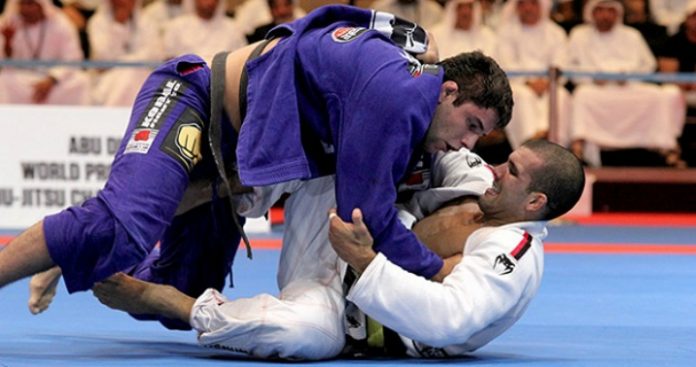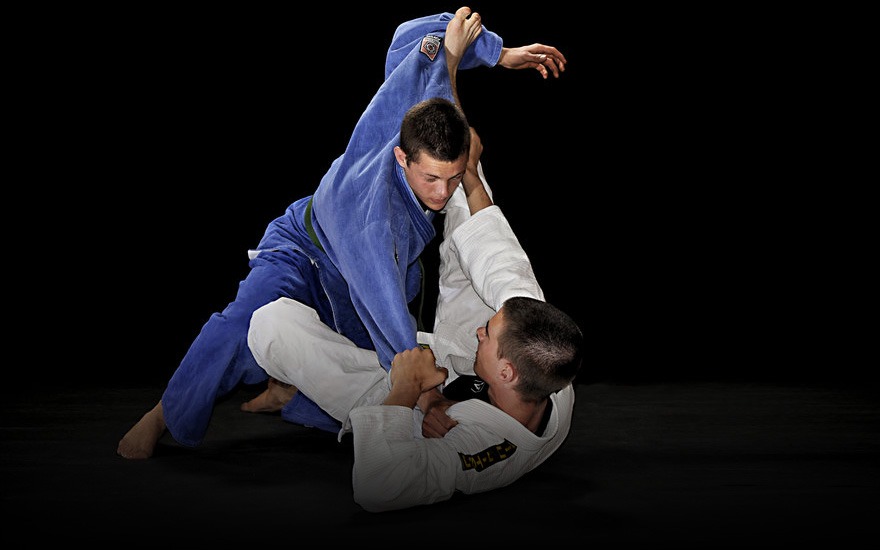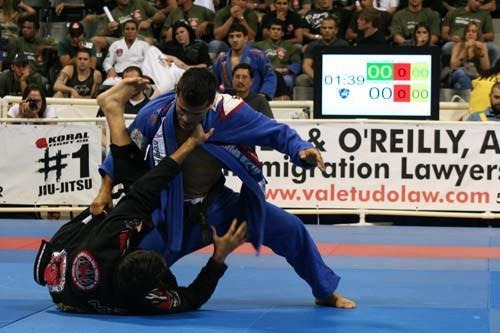
One thing I love to tell people when they come for an intro class in our academy is the in Jiu-Jitsu, there’s no need to drill the same move on both your left and right side. First of all, the looks on their faces amuse me very much. Next, I really believe this notion to be true. Not only that, but I trust that this is the best way to progress through art. What confuses people about it is that in just about any other martial art, there’s a rule about training both sides equally, there’s merit to this, and by all means, you’re free to have your best moves work bilaterally,. However, the nature of BJJ techniques is different, and the entire sport works off of a much different concept, compared to traditional martial arts. And yes, I do consider Brazilian Jiu-Jitsu to be unorthodox.
No matter how you look at it, BJJ is not your garden variety of martial art. From its origins to its meteoric rise and spread, all the way to whatever craziness is happening nowadays, Jiu-Jitsu is unique, to say the least. It is something that universally and realistically works in self-defense, is the base on which MMA was developed and is one of the most perspective sports today. IN that sense, innovation and “unorthodox” approaches are pretty much the rules, rather than the exception .that’s why the art is so effective, and why BJJ techniques are too many to count, let alone master. In fact, you can’t even try all of them in a lifetime, even if you start training at the age of 4. However, there’s a way to include many different ones in your training.
Technical Brazilian Jiu-Jitsu Training

Without technical training, there’s no progress, and that’s the one thing that’s clear to everyone. But how do you make your BJJ techniques effective, while learning new ones at the same time? This is different for different belt levels, but the principle is the same – trial and error. That said, when you go into training a move, you almost universally start with your string side, whether it is left or right. This right there opens up the question of whether you should spend more time repeating a technique on one side only or try and incorporate both of them. There are different schools of thought on this one. The best part is that you’re free to use whichever one you want.
As far as my opinion goes, I believe you should drill any new move on one side only until you get comfortable with it. Then you can try and give it a go on the other side. Or, try and do a different mo e, whether it is a similar one or a completely different one that chains well together.
The Tactical Side Of Things
Apart from the technical aspect, there’s also a tactical component to BJJ training. The technique can only get you so far if you do not have a strategy during rolling and/or training. You might have the crispest technique in the world, and you’ll still lose out to anyone above blue belt more often than not. That’s why people develop tactical games that incorporate BJJ techniques, rather than the other way around.
Whatever game you have, you’re bound to end up using BJJ techniques you’re comfortable with, or good at. In that sense, people usually build their A-games around their best moves. What most people fail to take into account is the side on which they’re doing things. IN fact, many simply think they’re just a good with their top moves on their weaker side. However, competition is a bad time to figure out that you’re not. That means you need to take side preferences when building a tactical gameplan for yourself, or someone else. That said, think about actually doing a different thing on the other side, even it is completely unlike your favorite technique. That’s precisely why it’ll work and confuse just about everyone.
The Case For Different BJJ Techniques On Each Side
So let’s talk about incorporating this approach to Jiu-Jitsu Let’s say you’re thinking about passing someone’s guard. You’re pretty comfortable with the knee slice pass for example. You set it all up perfectly, but the opponent has incredible guard retention skills and you end up struggling. you can always switch sides and go for the knee slice pass, but the outcome probably won’t be much different. However, if you decide to switch to a leg drag, for example, on the opposite side, and keep doing it back and forth, you’ll almost certainly get a pass.

Let’s say that you’re building an armbar from the S-mount. You might be struggling to break open the grips against a very strong opponent. From the S-mount, you’re free to switch sides with ease to get an armbar on the opposite side arm. But, what if you opt for a triangle instead of an armbar when you switch? Now, the submission threat is different, and it even opens up that initial armbar even more. The examples of training different BJJ techniques on different sides of your body are endless. It takes a bit of getting used to and perhaps a change in mindset. However, once you’re comfortable with it, you’ll see that this approach really offers something different.
Wrap Up
Brazilian Jiu-Jitsu is highly unusual as a sport, in every sense. One of the things I love the most about it is that it is not bound by tradition like other martial arts. In that sense, BJJ just keeps evolving and growing, with everyone constantly contributing. This concept of training BJJ techniques asymmetrically is a higher-level one, but beginners might look into it as well. It is especially useful for competitors, who can actually limit the number of BJJ techniques they’re performing, and really get the hang of each on the appropriate side.


![Darce Choke Encyclopedia – Origins, Mechanics and Variations [2025] BJJ, choke, Brabo, BJJ Darce Choke, D'arce Choke, Darce BJJ Choke](https://bjj-world.com/wp-content/uploads/2017/11/JungPoirierLeeYahoo-218x150.jpg)









![Get Off My Legs Gringo Craig Jones DVD Review [2025] Get Off My Legs Gringo Craig Jones DVD Review](https://bjj-world.com/wp-content/uploads/2025/03/get-off-my-legs-gringo-craig-jones-dvd-review-218x150.png)

![Leg Lock Entries Helena Crevar DVD Review [2025] Leg Lock Entries Helena Crevar DVD Review](https://bjj-world.com/wp-content/uploads/2025/03/leg-lock-entries-helena-crevar-dvd-review-218x150.png)
![Special K Guard Neil Melanson DVD Review [2025] Special K Guard Neil Melanson DVD Review](https://bjj-world.com/wp-content/uploads/2025/03/special-k-guard-neil-melanson-dvd-review-218x150.png)
![Arm Bar It All Shawn Melanson DVD Review [2025] Arm Bar It All Shawn Melanson DVD Review](https://bjj-world.com/wp-content/uploads/2025/03/arm-bar-it-all-shawn-melanson-dvd-review-218x150.png)

![Giancarlo Bodoni DVD Bundle Essential Connections Full Review [2024] Giancarlo Bodoni DVD Bundle Essential Connections Full Review](https://bjj-world.com/wp-content/uploads/2024/09/giancarlo-bodoni-dvd-bundle-essential-connections-324x235.png)
![Advantage Over Time Outside Passing Jozef Chen DVD Review [2025] Advantage Over Time Outside Passing Jozef Chen DVD Review](https://bjj-world.com/wp-content/uploads/2025/03/outside-passing-jozef-chen-dvd-review-100x70.png)
![Dima Murovanni Kill The Collar Tie BJJ Trendsetters DVD Review [2024] Dima Murovanni Kill The Collar Tie BJJ Trendsetters DVD Review](https://bjj-world.com/wp-content/uploads/2024/09/dima-murovanni-kill-the-collar-tie-dvd-review-100x70.png)



![Forging The De La Riva Guard Giancarlo Bodoni DVD Review [2025]](https://bjj-world.com/wp-content/uploads/2025/02/de-la-riva-guard-giancarlo-bodoni-dvd-review-100x70.png)





![Charles Allan Price Building Workouts For BJJ DVD Review [2024] Charles Allan Price Building Workouts For BJJ DVD Review](https://bjj-world.com/wp-content/uploads/2024/09/charles-allan-price-building-workouts-for-bjj-review-100x70.png)
![Jeff Higgs Self Defense Guard BJJ DVD Review [2024] Jeff Higgs Self Defense Guard BJJ DVD Review](https://bjj-world.com/wp-content/uploads/2024/09/jeff-higgs-self-defense-guard-bjj-dvd-review-100x70.png)

![Guard Busters Bill Cooper BJJ DVD Review [2025] Guard Busters Bill Cooper BJJ DVD Review](https://bjj-world.com/wp-content/uploads/2025/03/guard-busters-bill-cooper-bjj-dvd-review-100x70.png)
![Mastering The Crucifix Alexandre Pereira DVD Review [2025] Mastering The Crucifix Alexandre Pereira DVD Review](https://bjj-world.com/wp-content/uploads/2025/01/mastering-the-crucifix-alexandre-pereira-dvd-review-100x70.png)




![Creating Back Exposure Luke Griffith DVD Review [2025] Creating Back Exposure Luke Griffith DVD Review](https://bjj-world.com/wp-content/uploads/2025/01/creating-back-exposure-luke-griffith-dvd-review-100x70.png)
![Understanding The Distance On Top Gui Mendes DVD Review [2024] Understanding The Distance On Top Gui Mendes DVD Review](https://bjj-world.com/wp-content/uploads/2024/10/distance-on-top-gui-mendes-dvd-review-100x70.png)

![Two Sides One Game Sweep and Pass Marcos Tinoco DVD Review [2024] Two Sides One Game Sweep and Pass Marcos Tinoco DVD Review](https://bjj-world.com/wp-content/uploads/2024/11/sweep-and-pass-marcos-tinoco-dvd-review-100x70.png)

![The Buchecha Gi Takedown System DVD Review [2025] The Buchecha Gi Takedown System DVD Review](https://bjj-world.com/wp-content/uploads/2025/01/buchecha-gi-takedown-system-dvd-review-100x70.png)
![Finish on the Back Ethan Crelinsten DVD Review [2024] Finish on the Back Ethan Crelinsten DVD Review](https://bjj-world.com/wp-content/uploads/2024/10/finish-on-the-back-ethan-crelinsten-dvd-review-100x70.png)